GENERAL
Coconut Oil Hair Food: Top Benefits and Expert Comparisons
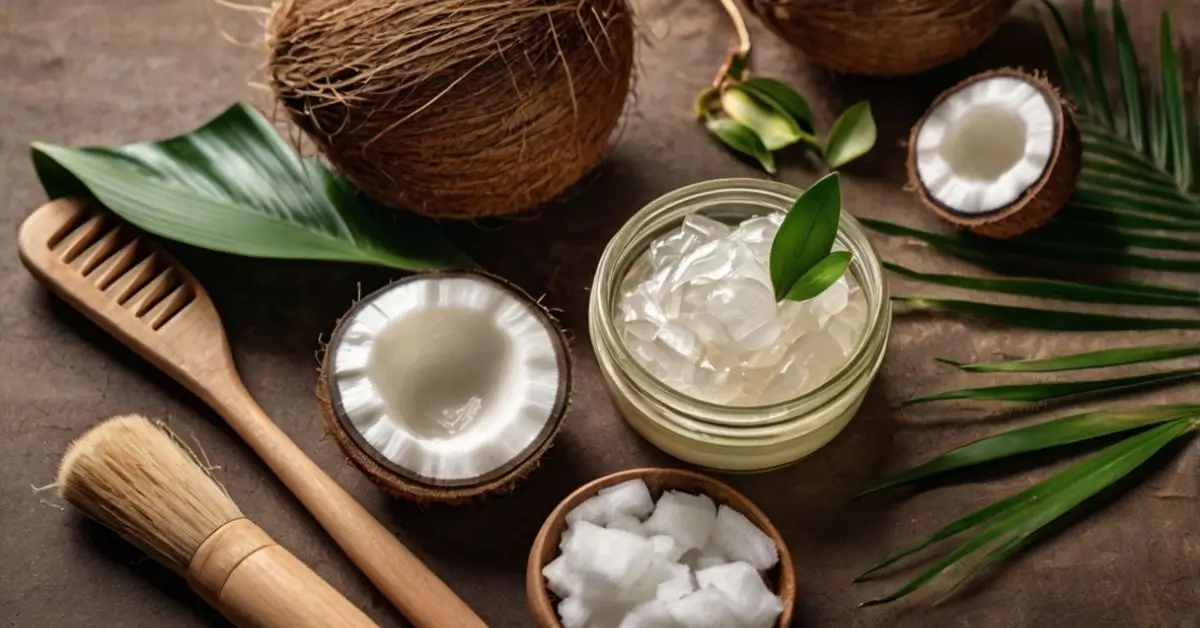
Coconut oil hair food is a renowned natural remedy that has long been used to enhance hair strength, promote shine, and protect the scalp. Known for its nourishing properties, this tropical solution is embraced by individuals across the world seeking healthier, stronger hair without the reliance on synthetic chemicals.
Whether your hair suffers from dryness, breakage, thinning, or frizz, understanding the potential of this time-tested ingredient is crucial for crafting an effective hair care routine. This guide explores the benefits, expert recommendations, practical uses, and how it compares to other treatments available in today’s market.
Why Coconut Oil Hair Food Is Gaining Popularity
The rise of natural beauty trends has pushed coconut-based products into the spotlight. Unlike synthetic options, this plant-derived hair food is loaded with medium-chain fatty acids, especially lauric acid, which penetrates deep into the hair shaft and repairs it from the inside.
Its multifunctional benefits make it ideal for treating various hair concerns while providing a safe and gentle solution for all hair types. For those seeking to avoid chemical-laden products, this natural oil-based remedy stands as a healthier alternative.
Major Benefits of Coconut Oil Hair Food
Moisture Retention
One of the most significant attributes is its ability to trap moisture within hair strands. This prevents dryness, especially in colder climates or with frequent washing.
Reduces Protein Loss
Hair is primarily made up of keratin, a structural protein. This product helps maintain protein levels, especially when applied before shampooing or heat styling.
Enhances Scalp Health
Its antimicrobial qualities help reduce dandruff, itchiness, and fungal infections. When massaged into the scalp, it stimulates blood circulation and promotes healthier follicle activity.
Improves Hair Texture
Using coconut oil-based products regularly can make hair smoother, shinier, and easier to manage—particularly for those with curly or coarse textures.
Natural Protection Barrier
Whether you’re styling with heat tools or spending time under the sun, applying a small amount can help shield your strands from thermal and UV damage.
Ingredients Commonly Blended with Coconut Oil Hair Food
Manufacturers often enrich this product with additional natural ingredients to boost its performance. Some beneficial additions include:
- Castor Oil: Promotes thicker hair growth.
- Shea Butter: Intensely hydrates and smooths hair.
- Argan Oil: Adds extra shine and repairs damage.
- Aloe Vera: Soothes scalp irritation.
- Essential Oils: Such as lavender or rosemary for calming and growth-stimulating effects.
These ingredients enhance the versatility and overall effectiveness of coconut oil-based formulations.
How to Apply Coconut Oil Hair Food for Maximum Results
Daily Use
Rub a small amount between your palms and smooth it over the ends of damp or dry hair. This helps manage flyaways, prevent split ends, and give a glossy finish.
Weekly Deep Treatment
Massage a generous amount onto the scalp and along the length of your hair. Leave it in for 20–30 minutes, preferably under a warm towel or shower cap, then wash thoroughly.
Overnight Mask
Apply before bed and cover your hair to allow deeper absorption. This method works best for extremely dry or damaged hair.
Ideal Hair Types for Coconut-Based Treatments
This hair food is suitable for a variety of textures and conditions:
- Dry or Damaged Hair: Restores moisture and shine.
- Curly and Coily Hair: Enhances definition and softness.
- Color-Treated Hair: Protects against fading and breakage.
- Thick Hair: Helps control frizz and flyaways.
People with very fine or oily hair should use it sparingly to avoid buildup or limpness.
Real Expert Opinions on Coconut Oil Hair Food
Experts in dermatology and hair health frequently endorse the use of this product for natural haircare. According to Dr. Debra Jaliman, a board-certified dermatologist:
“Coconut-based treatments are beneficial because they penetrate the hair shaft instead of merely coating it, which results in long-lasting moisture retention and protection.”
Additionally, stylists recommend applying it to damp hair after washing to help seal in hydration and reduce tangling.
Coconut Oil Hair Food vs. Other Hair Treatments
| Feature | Coconut Oil Hair Food | Argan Oil Serums | Leave-In Conditioners | Keratin Treatments | Silicones & Synthetic Oils |
| Affordability | Yes it is Budget-friendly | No it is not Expensive | Yes it is Mid-range | No it is not of High-cost | Yes it is Affordable |
| Natural Ingredients | Yes it is 100% Natural | Yes it is Semi-natural | No it is not Mixed | No it is not Chemical-based | No it is not Fully synthetic |
| Penetration Depth | Yes it is Deep penetration | Yes it is Surface only | ✘ Surface only | Yes Bond-level | No it is not Surface coating only |
| Ease of Use | Yes it is Simple application | Yes it is Easy | Yes it is Easy | No it does not Requires salon | Yes Very easy |
| Long-Term Benefits | Yes it is Cumulative gains | Yes it is Moderate | Yes it is Short-term hydration | No it is not Temporary | No it is not Minimal |
How to Select the Best Coconut Oil Hair Food
When shopping for the right product, always read the label and consider these tips:
- Choose virgin or cold-pressed coconut oil as the base.
- Avoid formulas with parabens, sulfates, or silicones.
- Opt for versions with added nutrients like biotin, vitamins A and E, or essential oils for added benefits.
Always patch test new products to ensure there are no allergic reactions or sensitivity.
Nutrition and Coconut Oil: Inside-Out Hair Health
A strong connection exists between diet and hair condition. Coconut oil is beneficial not only topically but also when consumed in moderation as part of a balanced diet.
Dietary Benefits Include:
- Boosting Good Fats Intake: Supports healthy skin and scalp.
- Anti-Inflammatory Effects: Reduces chronic scalp issues.
- Supports Hormone Regulation: Which directly impacts hair growth and strength.
Including coconut oil in meals (such as smoothies, cooking oil, or salads) can work synergistically with topical treatments.
Precautions and Tips for First-Time Users
Start Small
Apply a dime-sized amount and gradually increase based on hair length and dryness level.
Wash Thoroughly
Rinse thoroughly after deep treatments to avoid greasy residue or buildup.
Mix with Carrier Oils (Optional)
If coconut oil alone feels too heavy, blending it with lighter oils like jojoba or grapeseed oil can make it more manageable.
Sustainable and Ethical Advantages
One of the added benefits of choosing coconut-based products is their alignment with sustainable beauty practices. Many brands use eco-friendly packaging and ethically source their ingredients from local farms in tropical regions.
Choosing such brands not only supports your hair health but also contributes positively to the environment and local economies.
Common Misconceptions
“Coconut oil clogs pores.”
This is mostly true for facial skincare, but when applied correctly to the scalp and rinsed well, it typically does not cause buildup.
“It works for everyone.”
While widely effective, individual results may vary depending on hair porosity, texture, and climate.
Conclusion
Coconut oil hair food offers a holistic solution for enhancing the health, appearance, and strength of your hair. With regular and correct use, it penetrates deeply, protects from external damage, and restores natural shine—making it a go-to remedy for those embracing natural haircare. Whether you have dry curls or color-treated locks, incorporating this nutrient-rich treatment into your routine is a step toward stronger, more resilient hair. Trust in its natural power and the centuries of use it represents, and let your hair thrive the way nature intended.
FAQs
How often can I apply coconut oil hair food?
Once or twice weekly is ideal for most hair types. Use less frequently for oily hair.
Is it okay to leave coconut oil hair food overnight?
Yes, overnight application allows deeper absorption, especially when used as a treatment mask.
Can I use coconut oil hair food on my scalp?
Yes, it’s beneficial for the scalp, reducing dandruff and promoting circulation.
What if my hair feels greasy after using it?
You might be using too much. Try a smaller amount and rinse thoroughly.
Is this product good for kids’ hair?
Yes, as long as it’s natural and free from harsh additives, it’s safe for children.
Will coconut oil hair food help with split ends?
While it won’t repair split ends, it can prevent them by keeping hair moisturized and protected.
GENERAL
What Are Guinness Calories? Simple Nutrition Facts 2025
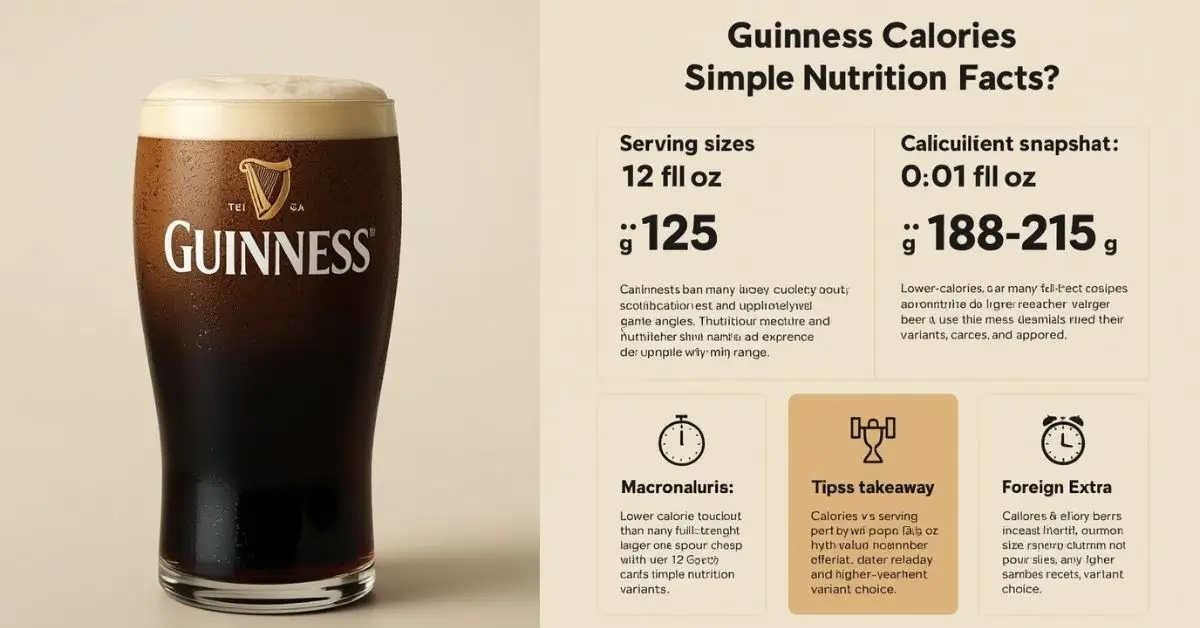
Ever wonder if your beloved pint is sneaking in more calories than you’d like? You’ve been there. I’ll help you understand [guinness calories] the smart way—no fluff, just real-world facts and easy clarity.
Quick Answer
A pint (16 oz) of Guinness Draught has about 210 calories (about 35 kcal per 100 ml). Calories come mainly from alcohol and carbs. Simple, direct, no guesswork.
What’s in a 12-oz Guinness Draught?
This tells you exactly what’s in a standard serving.
You’ll learn the facts fast:
- 12 oz (~355 ml) of Guinness Draught has 125 calories (Alcohol 11.2 g, carbs 10 g).
- That’s ~35 kcal per 100 ml for Guinness Draught or Extra Stout. A full pint rounds to ~210 calories total.
Key Intake: A full pint = ~210 kcal; most calories come from alcohol.
How Do Variants Stack Up?
See how different types compare no guessing here.
| Variant | Calories (per 12 oz) | Key Notes |
| Draught | ~125 kcal | Standard, smooth |
| Foreign Extra Stout | ~194 kcal | Rich, roasty |
| Baltimore Blonde Lager | ~167 kcal | Hoppy, lighter |
| Guinness Smooth (per 100 ml) | ~57 kcal (~217 kcal pint) |
Key Intake: Higher ABV = more calories. Pick the one that fits your macro budget.
Why Calories Vary Breakdown by Source

Learn where the calories come from, not just numbers.
- Alcohol has 7 kcal per gram; in Draught, ~62% of calories are from alcohol.
- Carbs add the rest—around 10 g in a 12-oz Draught (~40 kcal).
Key Intake: Calories split roughly 60% alcohol, 40% carbs.
Non-Alcoholic and Low-Cal Alternatives
Find choices when you want flavor without the calorie hit.
- Guinness 0: only 17 kcal per 100 ml (≈ 68 kcal per pint).
- Good picks if you’re tracking macros or avoiding alcohol.
Key Intake: Guinness 0 is a clever low-calorie swap for your pint fix.
What This Means for Dieters & Health-Mindful Drinkers
A quick guide to fit Guinness into your nutrition plan.
- A pint ~ 210 kcal is moderate—less than many craft ales (160–180 kcal).
- If counting macros, know: alcohol is the main calorie source.
Key Intake: It’s not “diet-friendly” but moderate and trackable.
Final Takeaway
This isn’t sugar-coated. If you’re watching your calories, understanding “guinness calories” means choosing wisely, knowing exactly what’s in your pint, and fitting it into your wellness plan like a smart decision, not a hidden cost.
FAQ’s
How many calories are in a pint of Guinness?
~210 kcal per pint, based on ~35 kcal per 100 ml.
What’s the calorie content of a 12-oz Guinness Draught vs Extra Stout?
Draught ~125 kcal; Extra Stout ~180–194 kcal.
Are there lower-calorie alternatives to Guinness stout?
Yes—Guinness 0 has only ~17 kcal per 100 ml (≈ 68 kcal per pint).
Guinness calories vs Bud Light: which is lower?
Guinness Draught (~125 kcal) is similar or slightly higher than Bud Light (~110 kcal).
How many calories per gram of alcohol are in Guinness?
Alcohol contributes 7 kcal per gram; ~60% of calories in Draught come from alcohol.
Calories in Guinness Draught nutritional facts explained?
~125 kcal from alcohol (78 kcal) + carbs (~40 kcal), plus ~1 g protein.
Is Guinness high in calories for a diet plan?
It’s moderate; track it, and it can fit in but be mindful of alcohol calories.
Expert Citations
- Healthline: Detailed breakdown of calories from alcohol vs carbs in Guinness Draught.
- Guinness.com: Official calorie counts across variants (Draught, Extra Stout, 0.0, etc.).
- Guinness product pages: Precise nutrition data for each variant – Draught, Foreign Extra Stout, Blonde, Smooth, etc.
GENERAL
Why the Rory Masters Collapse Still Matters Today (2025)

Golf can be cruel. One minute you’re leading the Masters, the next you’re fighting to hold it together. Rory Masters collapse moments have given fans drama, heartbreak, and unforgettable TV.
We’ve all seen it happen, the missed shots, the tense body language, the scoreboard slipping away. But why does it happen to a player as good as Rory McIlroy? Let’s break it down.
Quick Answer
The Rory Masters collapse refers to multiple high-profile moments at Augusta where Rory McIlroy lost his lead, most famously in 2011 when he shot 80 in the final round, and again in 2025 with late-round bogeys. Causes include mental pressure, course difficulty, and external distractions like slow play. Yet, Rory has also turned these failures into motivation, ultimately winning the Masters in 2025 to complete his career Grand Slam.
Rory McIlroy: Masters Career Profile
| Category | Details |
| Name | Rory McIlroy |
| Date of Birth | May 4, 1989 (age 36) (ESPN.com) |
| Hometown | Holywood, Northern Ireland (ESPN.com) |
| Turned Pro | 2007 (ESPN.com) |
| Masters Titles | 2025 (First win; career Grand Slam completed) (Reuters, The Washington Post) |
| Notable Collapses at Masters | 2011 final-round meltdown (80, from 4-shot lead) (Wikipedia) |
| Masters Attempts Before Win | 17 attempts at Augusta by 2025 (The Sun) |
| Other Major Wins | U.S. Open 2011, PGA Championship 2012 & 2014, Open Championship 2014 (Data Golf, Wikipedia, Reuters) |
| Total Career Wins (2025) | 44 total: 29 PGA Tour, 18 European Tour, others (Talksport) |
| Career Grand Slam | Achieved with 2025 Masters win; one of six to do so (Reuters, Talksport) |
| Signature Moment | Emotional collapse to celebrating Green Jacket after playoff win vs. Justin Rose (The Washington Post) |
| Key Strengths | Multiple Majors, career Grand Slam, long-time world No.1 (European Tour, Reuters) |
| Resilience & Legacy | Climbed back from 2011 collapse to claim Masters, completing a decade-long quest (The Scottish Sun, Reuters) |
2011 The Collapse That Started It All
The first big Rory Masters collapse came in 2011.
- Rory led by four shots after three rounds.
- On Sunday, Augusta’s pressure took over.
- He shot an 80 and finished tied for 15th.
2025 A New Collapse, Same Augusta Pressure
Fast forward to 2025. Rory was 4-under through 14 holes in Round 1.
- Then came bogeys on 15 and 16.
- A double bogey on 17 sealed the damage.
Paul McGinley, former Ryder Cup captain, called it a slow play distraction McIlroy couldn’t shake. This wasn’t the first time Rory felt Augusta’s mental toll.
Why Collapses Happen at Augusta
Definition:
Mental collapse in golf Majors is when focus, rhythm, and execution fall apart under tournament stress.
Augusta National tests more than swing mechanics. It pushes the mind to breaking point.
Key factors:
- Course design: punishes tiny errors.
- Crowd energy: amplifies every mistake.
- Mental game: pressure spikes near the finish.
Rory’s Redemption 2025 Masters Win
Here’s the twist: despite the early stumble, Rory fought back. By Sunday evening, he wore the green jacket.
- He became only the 6th golfer to complete the career Grand Slam delay McIlroy had chased for over a decade.
- His win proved collapse doesn’t have to define you.
What Fans and Players Can Learn
- Stay present: Focus on one shot at a time.
- Adapt fast: Don’t let a bad hole become a bad round.
- Pressure prep: Simulate high-stakes moments in practice.
Real-world note:
I’ve seen players choke in local tournaments because they never practiced the mental side. Rory’s story shows why it matters.
FAQs
Why is Rory McIlroy’s Masters collapse famous?
It’s remembered for how quickly a winning position turned into a blowout, especially in 2011 when he led by four shots.
How many times has Rory collapsed at the Masters?
At least twice in high-profile ways — 2011’s final-round meltdown and the 2025 early-round stumble.
What caused Rory’s 2025 collapse?
Analysts point to mental pressure and slow play distractions from his group.
Has Rory ever recovered from a Masters collapse?
Yes. He won the Masters in 2025, securing his career Grand Slam.
Expert Citations
- Paul McGinley — TalkSport: “Slow play affected Rory’s rhythm.”
- Golf.com — “Analyst says slow play led to Rory’s Masters collapse.”
- Wall Street Journal — “McIlroy completes career Grand Slam with 2025 Masters win.”
GENERAL
What to Know About Johnny Depp Island in the Bahamas

You’re curious, and honestly—so am I. What’s it like to own a slice of Caribbean magic, hidden away from prying eyes? Especially when that slice belongs to a Hollywood legend. Let’s cut through the noise and get real.
Quick Answer
Johnny Depp’s Island is called Little Hall’s Pond Cay. He bought it in 2004 for about $3.6 million. It spans roughly 45 acres and is 60 miles southeast of Nassau in the Bahamas. He still owns it as of mid-2025.
Where is Johnny Depp’s Island located?
Here’s what you’ll learn: Its geography, how big it is, and where it sits in paradise.
- Located in the Exuma Islands, Bahamas, about 60 miles southeast of Nassau (Tuko.co.ke – Kenya News, Market Realist, News).
- Covers roughly 45 acres (18 hectares), a sizable tropical property with six beaches (Tuko.co.ke – Kenya News, Newszetu).
It’s a mid-size tropical hideaway, a boat-ride from Nassau. Pure, quiet, untouched.
What’s the story behind its name and purchase?
Here’s what you’ll learn: Why Johnny Depp bought it, what he named parts of it, and how he transformed it.
- Johnny Depp Island was discovered while filming Pirates of the Caribbean. He bought it in 2004 for about $3.6 million (Vanity Fair, News, Homes & Gardens).
- The six beaches are named after his loved ones and mentors—Gonzo (Hunter S. Thompson), Lily Rose, Jack, Brando (Marlon Brando), and Paradis (Vanessa Paradis) (Vanity Fair, Market Realist, People.com).
- He built a ranch-style main house with 360° views, solar-powered guest structures, a bamboo yurt, and a beach house—low-key luxury meets eco-sensitivity (DDW, Tinseltown Tales, DMARGE, CEO Today).
What makes it a sanctuary—and does Depp still own it?
Here’s what you’ll learn: Why it’s meaningful to Johnny Depp and if he still owns it.
- Depp calls Johnny Depp Island “pure and beautiful” and says you can feel your “pulse drop” there—instant freedom (Vanity Fair, Newszetu, Tinseltown Tales).
- As of mid-2025, he still owns it despite rumors of a sale to J.K. Rowling (CEO Today).
Celebrity & luxury context
Here’s what you’ll learn: How it fits with celeb real-estate and pop culture.
- Johnny Depp Island sits among other Bahamas celebrity islands, near properties owned by Eddie Murphy and David Copperfield (Tuko.co.ke – Kenya News).
- The island has hosted Depp’s wedding to Amber Heard in 2015 and served as a detox retreat during difficult times (Glamour, DMARGE, Market Realist).
Takeaway
From celebrity news readers to luxury travellers to real-estate enthusiasts, Little Hall’s Pond Cay—better known as Johnny Depp Island—is a rare, personal hideout that blends Depp’s eclectic style with genuine peace. Based on real-world reports and Depp’s own words, this island is more than property—it’s sanctuary.
FAQ’s
Where is Johnny Depp’s island located?
A private island called Little Hall’s Pond Cay, in the Exuma chain, 60 miles southeast of Nassau, Bahamas.
What is the name of Johnny Depp’s private island?
It’s called Little Hall’s Pond Cay.
How much did Johnny Depp’s island cost?
He bought it for around $3.6 million in 2004.
Can you visit Johnny Depp’s island in the Bahamas?
No—access is strictly by invitation only.
What’s the history of Johnny Depp’s Little Hall’s Pond Cay?
He discovered it during Pirates of the Caribbean filming, bought it, built eco-homes, and still owns it as of 2025.
What are some luxury aspects similar to this island?
Think celebrity-owned private islands—secluded, bespoke retreats designed for quiet, high-end living.
Expert Sources
- Vanity Fair – Their coverage on Johnny Depp Island includes direct quotes and historical context from the actor himself. (vanityfair.com)
- People Magazine – Their article on Johnny Depp Island offers fact-checked property details and insider background. (people.com)
- Homes & Gardens – A respected home and lifestyle publication that provides credible real-estate insights, including luxury property features and valuations for celebrity-owned estates. (homesandgardens.com)
-
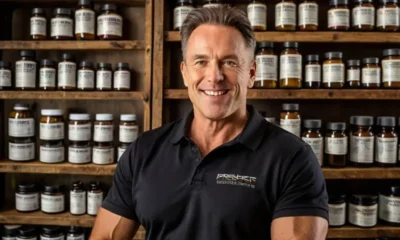
 GENERAL3 months ago
GENERAL3 months agoGary Brecka Supplements: Unlocking Peak Human Performance
-

 GENERAL3 months ago
GENERAL3 months agoActivia Yogurt Nutrition Facts You Shouldn’t Ignore
-
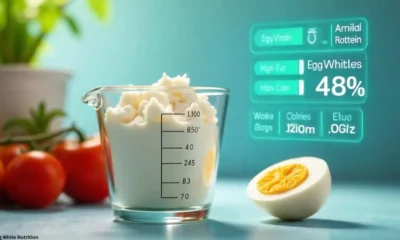
 HEALTHY DIET3 months ago
HEALTHY DIET3 months ago1 Cup Egg White Nutrition: Protein Powerhouse for Optimal Health
-

 HEART TIPS3 months ago
HEART TIPS3 months agoTheralogix NeoQ10 Coenzyme Q10 Supplement – Heart Health
-

 HEART TIPS3 months ago
HEART TIPS3 months agoCommon Heart Home Health: Trusted Cardiac Care at Home
-

 GENERAL3 months ago
GENERAL3 months agoCan Mental Health Nurse Practitioner Prescribe Medication
-
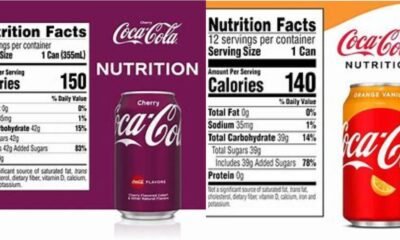
 GENERAL3 months ago
GENERAL3 months ago12 oz Coke Nutrition Facts: What’s Really Inside?
-

 GENERAL3 months ago
GENERAL3 months agoHealthy Living at Home for a Better You
